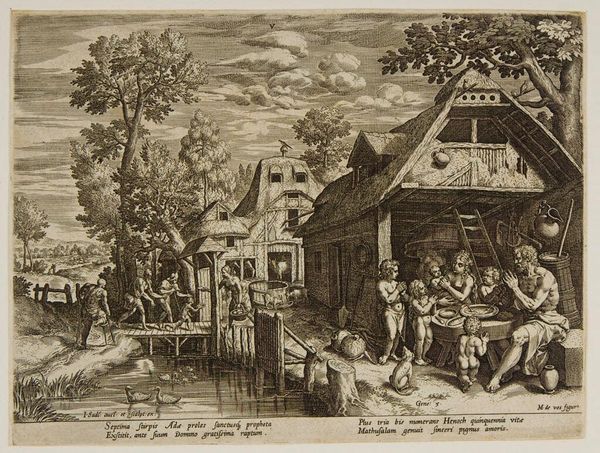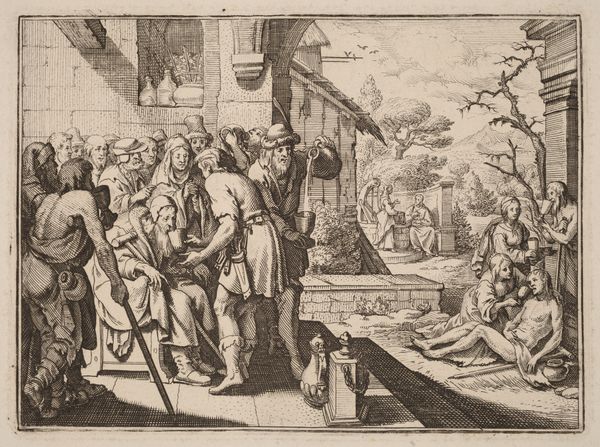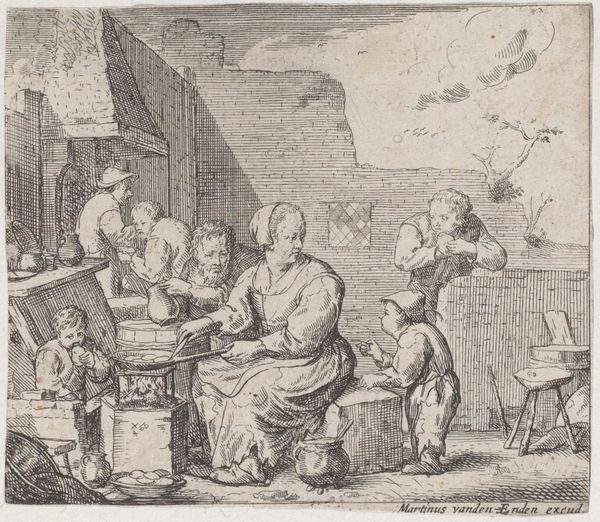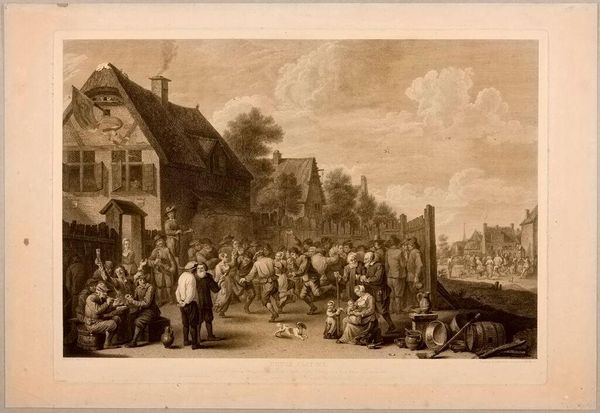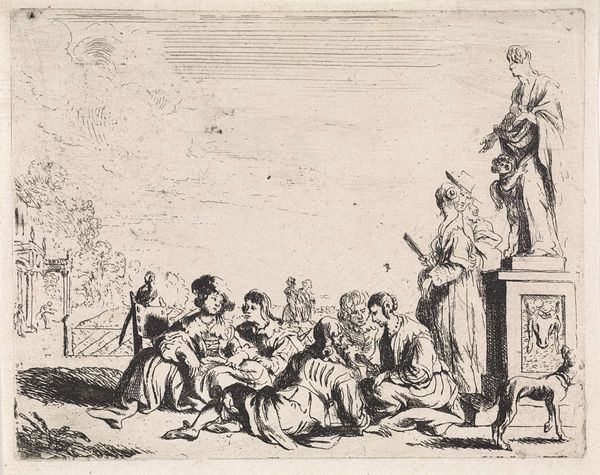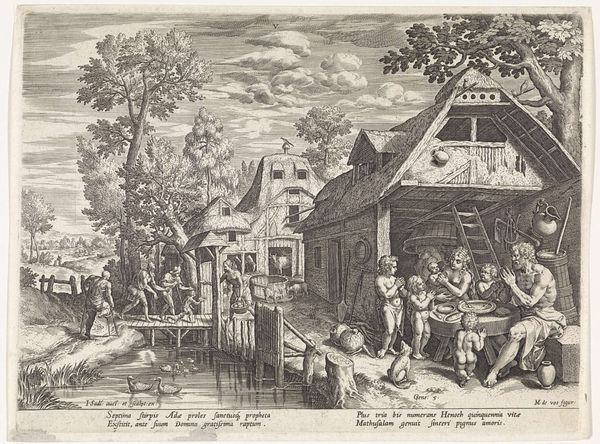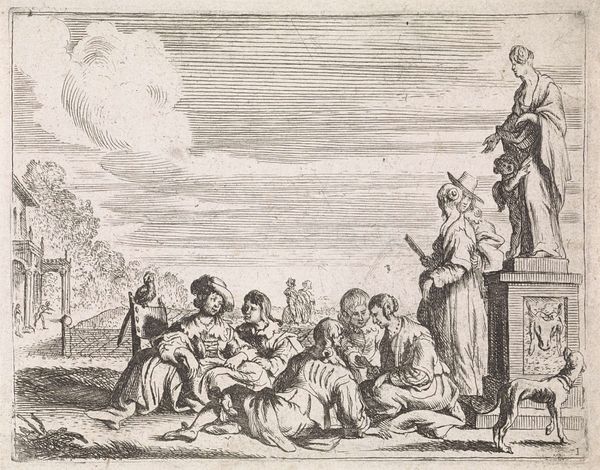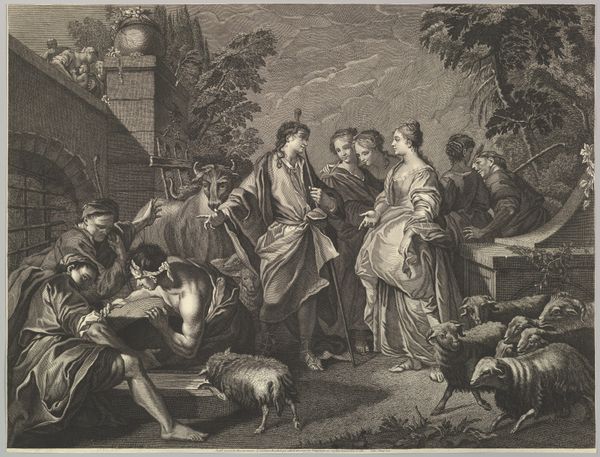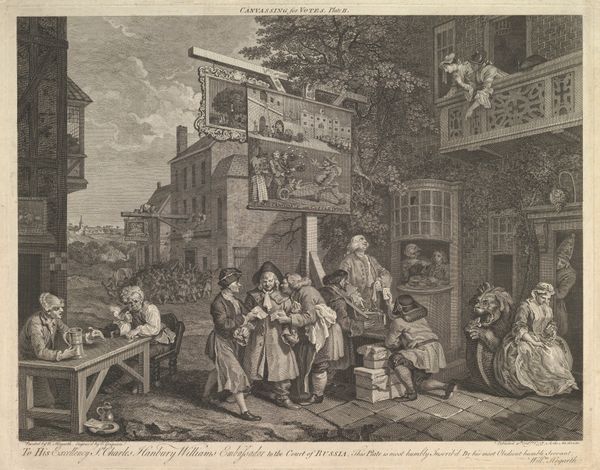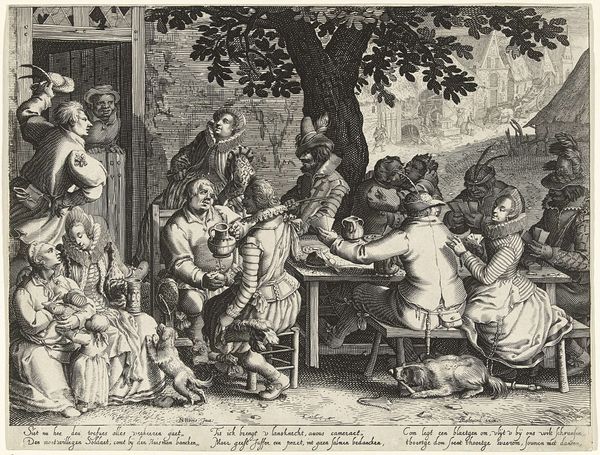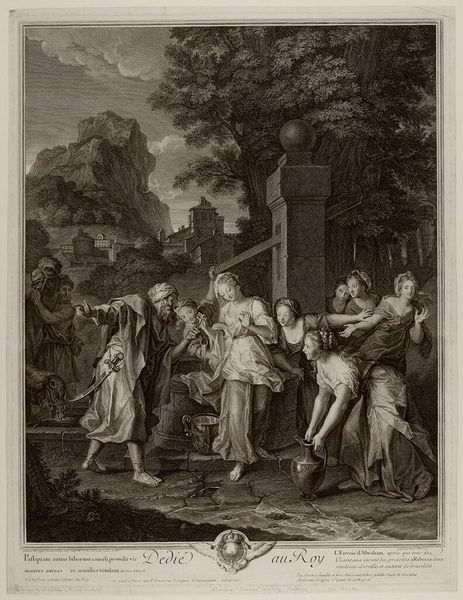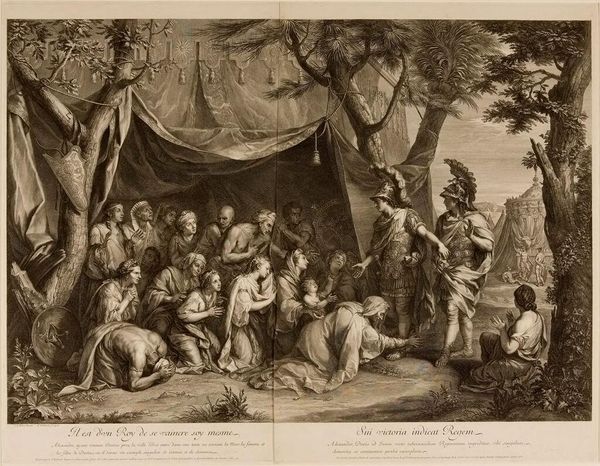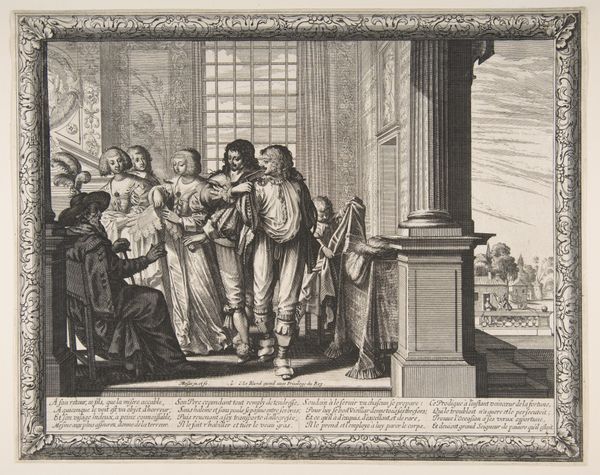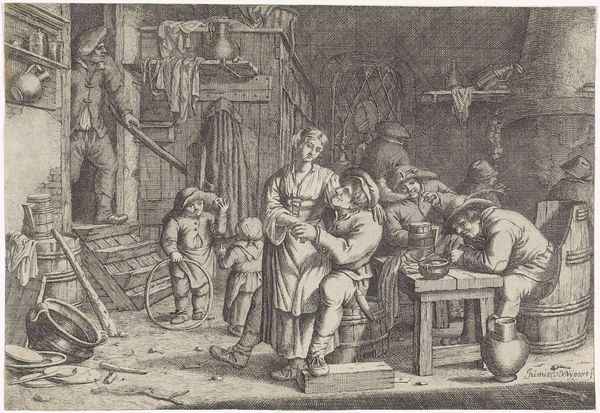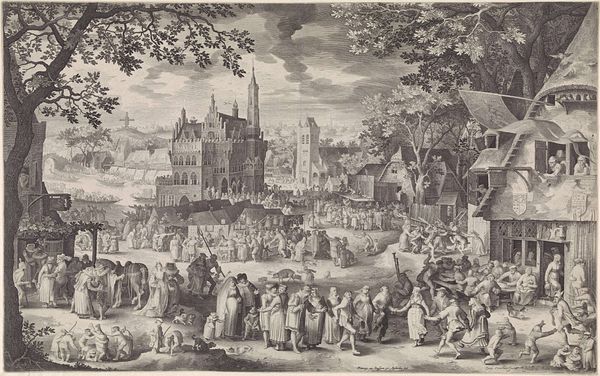
oil-paint
#
narrative-art
#
baroque
#
oil-paint
#
landscape
#
oil painting
#
group-portraits
#
genre-painting
#
realism
Dimensions: 57 x 77 cm
Copyright: Public domain
Curator: David Teniers the Younger completed "The Works of Mercy" in 1645. Painted in oil, this genre scene offers a glimpse into 17th-century Flemish life, a landscape teeming with figures enacting charitable deeds. It now resides in the Louvre, a remarkable example of Baroque painting. Editor: What strikes me first is the dynamic composition; the way Teniers groups the figures, directing the eye through a series of interactions, each illustrating a different act of kindness. The color palette, subdued and earthy, contributes to the overall sense of everyday realism. Curator: The title, "The Works of Mercy", speaks directly to the underlying symbolism. Notice how the artist depicts specific acts – feeding the hungry, clothing the naked, sheltering the homeless. These aren't random encounters but deliberate depictions of Christian virtues and the performance of charitable works. There’s a profound cultural memory embedded in these scenes. Editor: Precisely, and the light plays a crucial role. It illuminates these central acts of generosity, spotlighting the exchanges while the surrounding environment remains in a softer, more muted focus. It draws attention to the gestures of giving and receiving, making them the visual and moral center of the artwork. Curator: And beyond the overt religious context, consider the psychological impact on viewers throughout history. This isn't just a static display of philanthropy; it’s an invitation to empathize, to recognize ourselves in these exchanges of need and generosity, perpetuating a moral legacy through the visual representation. The artist succeeds in reminding the viewer of a collective societal need to promote the works of mercy. Editor: From a formal perspective, the layering of figures adds a rich depth to the canvas, each person differentiated by their clothing and pose. Note how he utilizes line and form to subtly connect these disparate groups within a unified composition, achieving visual coherence within this vibrant tableau. It reflects, too, the formal techniques of Baroque painting in representing movement. Curator: Examining how these symbols resonate throughout time is vital. "The Works of Mercy" is not only an example of skillful Baroque art, but it invites us to look at how deeply ingrained these ideals are in the shared cultural identity. Editor: Yes, analyzing these interactions brings one to understand better not just Baroque artistic practices, but more generally how structure, composition, and color interact in a scene intended to deliver and project core values in everyday life.
Comments
No comments
Be the first to comment and join the conversation on the ultimate creative platform.
